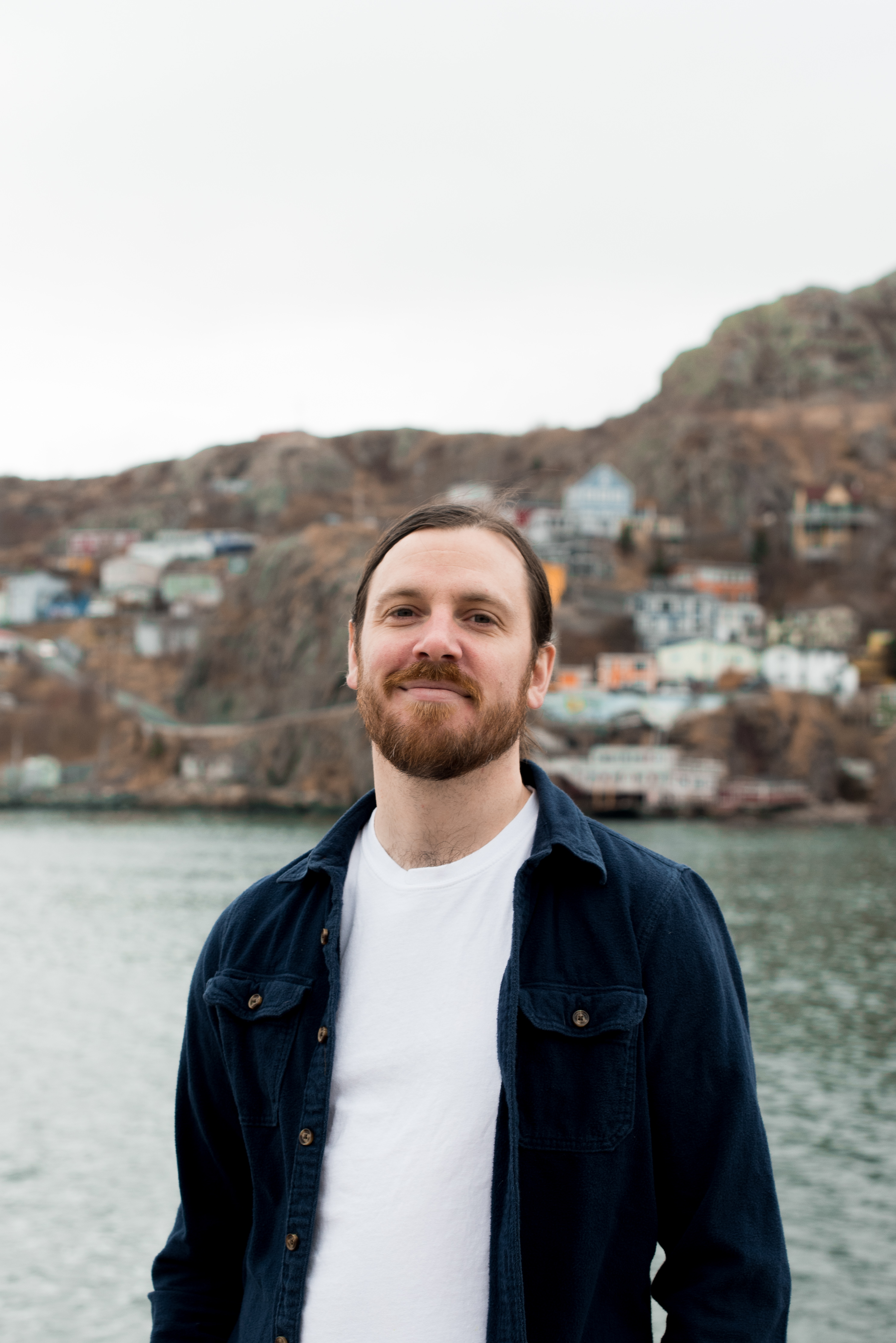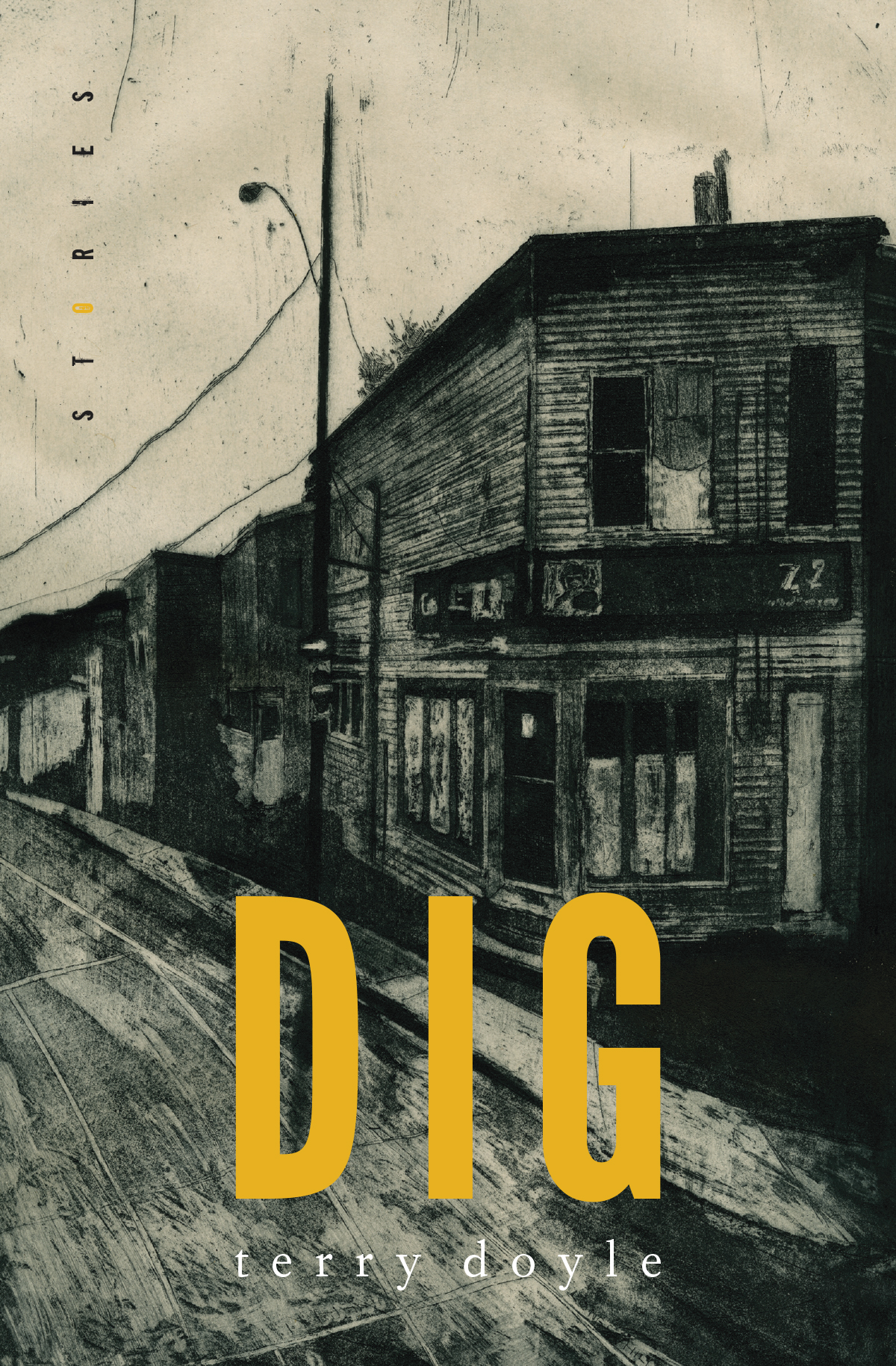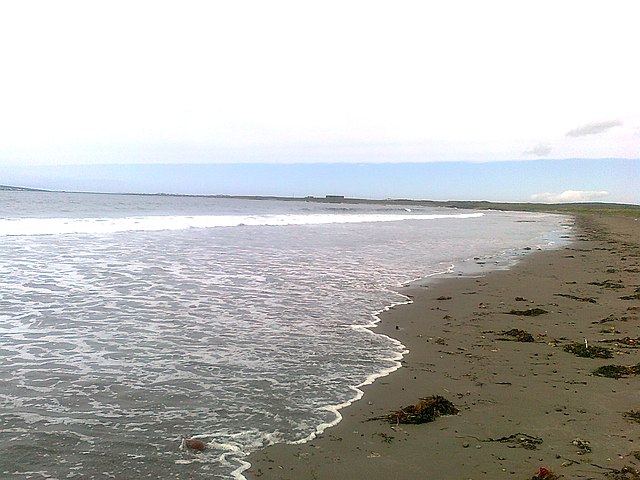Q & A with writer Terry Doyle
BY NQ
March 2019
Could you tell us a little about yourself?
Oh dear.
I am from the Goulds (Goulds Rules) and I was born in 1982, I’m told that means I’m neither GenX nor a Millennial.
I’m not university educated, which seems to be rare in the local writing community, at least among the people I’ve met.
I’m a plumber, a gardener, a hockey player, and a seasoned thrift shopper.
I’m married to an incredible, brilliant, empathic woman named Allison, and we are over-the-moon proud parents of a five-year-old named Burgess, who wants to be a garbage man when he grows up.

Terry Doyle
These stories feel so contemporary and ‘ripped from the headlines’ – how do you keep them so fresh?
I try to write about my community. I make notes on my phone a lot. Any idea or image or snippet of dialogue gets put into my little digital notebook. For example one of my most recent notes is about the scummy, never-cleaned fish tank at Jungle Jims on George Street. It might never make it into a story, but the more notes I take, the better equipped I’ll be.
Then I’ll use those notes, sometimes like a sort of connect-the-dots method, free-associating between them, trying to write at speed without too much planning or forethought.
Mostly though I guess it all comes down to noticing. Observing the things around you and seeing the potential there. Writing kind of gives you new eyes that way. It makes every experience, every moment ripe with possibility, because you could be shovelling out your car or at a kid’s birthday party and you just never know what you might see or hear that you can turn into a note, and subsequently could find its way into a story.
What artists, not necessarily writers, influence you?
I am constantly influenced and encouraged by all the people I know who do creative work. Ryan Kennedy and Chris Donnelly are incredible musicians, Katrina Healey does the best textile pet portraits, Jonathan Green designed my book cover, he works in intaglio, Derrick Legrow makes beautiful handcrafted cat toys, Laura Huckle is a superb actor, I could go on and on.
Lately though the biggest influences have been mostly writers. George Saunders, Dermot Healy, Lisa Moore, Michael Winter, Raymond Carver, Amy Hempel, Kevin Barry.
I took some creative writing classes with Lisa Moore and each time I sat down with her it was as if she pulled a coin from behind my ear and showed me some new capacity I had, or shared with me an influencer I hadn’t even heard about yet. In fact it was Lisa who told me that my style was bordering on minimalism and suggested I read Carver, who I hadn’t heard of at the time. Then, when I did read Carver, it was kind of permission-giving for me.
Lisa has a way of legitimizing our work. Sometimes with an offhand comment or sometimes with an adamant statement that says, This is real; this is writing.

Terry Doyle’s short story collection Dig
will be published by Breakwater Books
April 1, 2019.
What artists, not necessarily writers, do you wish received more attention?
All of them. I wish as a culture we valued art more. I wish there was adequate funding for the arts, especially compared to other industries. The comparative value that the arts contribute to our city, our province, the world, is astounding when we place it next to something like new home construction or cruise ships. Yet I find myself constantly feeling the need to justify what I do. Because it’s not lucrative, and my family has to sacrifice in order for me to pursue this, which allows doubt to creep in.
My last job as a plumber was in Bull Arm, on the Hebron project. In five months I made about 60k. A lot of the work I did out there was redundant. Installing pipe only to disassemble it the following week. Or standing around, waiting for materials or tools to finally show up. I’m doing my taxes now, and last year – 2018 – as a writer I made about six grand. Most of that was from a grant. Now, I’m very fortunate to have a partner who supports my dream, but I have to wonder how sustainable it is.
Imagine a world without music, books, film, paintings, or theatre?
It’s an industry where the participants aren’t driven mainly by profits. The need to be creative is innate for a lot of people. I wish we valued that more.
You seem to have really mastered the art of finishing a short story, ending on an almost-too-soon, but perfect, note. How do you know when the story is over?
Thank you.
I think it’s mostly instinct. I try to use instinct or intuition throughout my process, not overthinking, as I said earlier. I’ve read and listened to a lot of George Saunders, both his stories and interviews, and I think it has made me value the subconscious as the place that produces the best work. I try to write fast, without looking back until the draft is complete, and I’ve found it often leads to pleasant surprises. Things I likely would not have produced had I been consciously trying to, or planning.
And usually when I’m drafting, as I start approaching the end I find myself sort of rushing to get out. I don’t want to linger. But I also crave endings that are a little punchy. So I guess the answer is I don’t know. It’s mostly a gut feeling.
Terry Doyle’s debut short story collection Dig is coming from Breakwater Books April 1.



